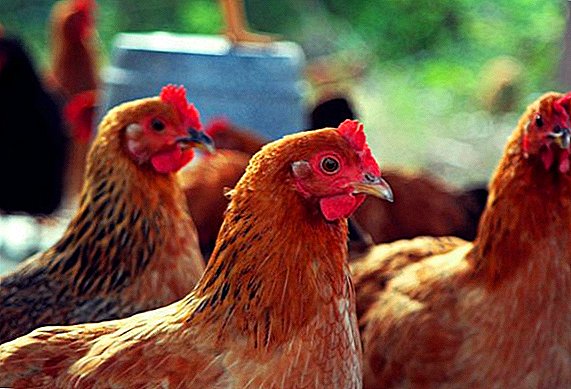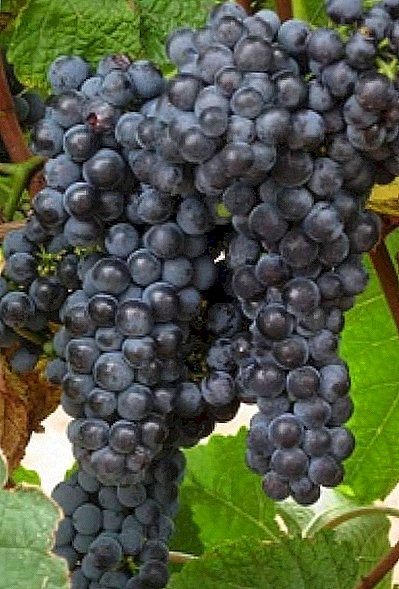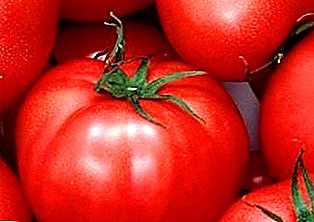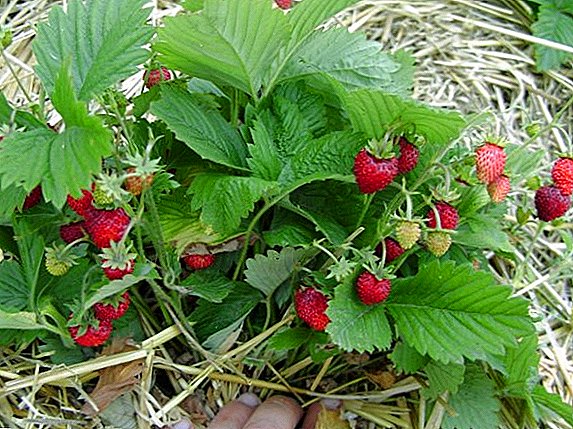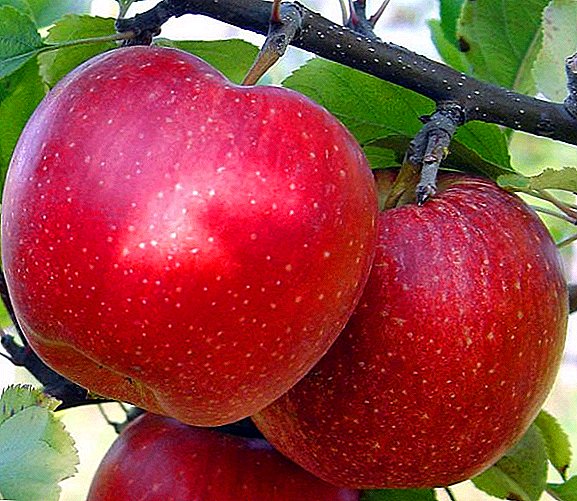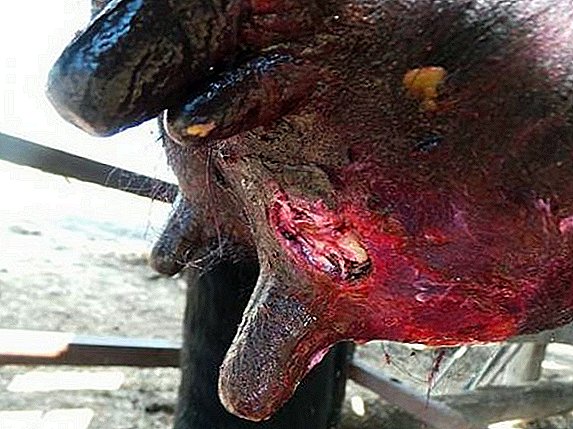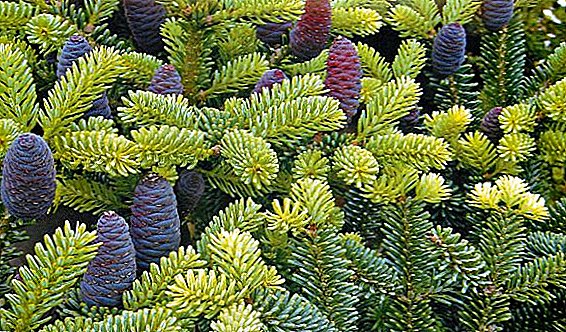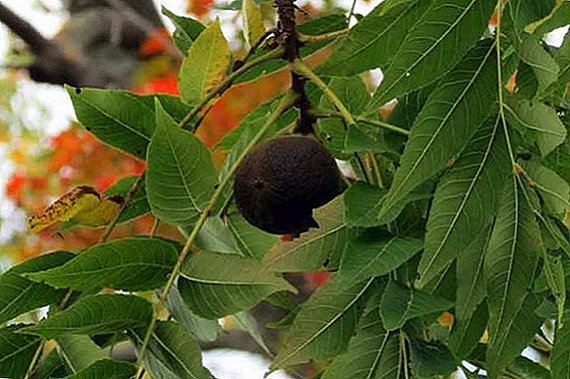
Kishmish 342 is hardly the most popular and widespread seedless grape today.
It has many excellent properties, is simple in growing at the dacha and does not require special knowledge.
Often this variety is called Kishmish Hungarian or ГФ № 342.
What kind is it?
Variety Kishmish 342 belongs to a group of very early varieties. Full maturation occurs within 105-115 days from the appearance of the first ovaries to harvest. This is a wonderful table white grape variety, which has an excellent memorable taste and beautiful appearance.
Among the top varieties worth paying attention to Muscat White, Julian and Gordey.
Kishmish 342 grapes: variety description
 Kishmish 342 is a very tall and prone to sprouting variety. Requires proper pruning and does not like thickening.
Kishmish 342 is a very tall and prone to sprouting variety. Requires proper pruning and does not like thickening.
Aging shoots good when pruning on 7-8 eyes. The number of fruitful shoots - more 80% per bush. On one shoot it is better to leave by 2-3 clusters. Vine ripens along its entire length.
Clusters are small, about 400-600 grconical shape, rather dense. With a large shaping of the bush, clusters can reach 1.5 kg.
This variety has a high sugar content and low acidity. The flesh is dense, juicy and tender, with a pleasant, slightly muscat flavor. The skin is very thin, but dense, with a slight wax coating.
Bianca, Aladdin and King Ruby can also boast a high sugar content.
A photo
More information about the grapes "Kishmish 342" can be in the photo below:




Breeding history
Kishmish 342 is a relatively young variety, but already deserved the trust and love of gardeners. It was bred in Hungary by crossing the early Crimson Perlet and the late technical variety. Villars Blanc.
Due to its early ripening and increased winter hardiness, Kishmish 342 is excellent for growing in difficult climatic conditions.
Specifications
Kishmish 342 is a very fruitful and frost-resistant variety. In a temperate climate, of course, requires shelter for the winter, but withstands a decrease in problems t to -26-27 С. With proper care, you can get up to 20-25 kg of berries from one bush.
It tolerates transportation and can be stored for about 3-4 weeks. The only condition: time to harvest from the bush, because it loses its taste and is badly damaged by wasps.
Such varieties as Nadezhda Azos, Bazhena and Krasa Beams do not lose their qualities during transportation.
Features of growing
First you need to decide on the landing site. Perfect for growing this variety is a warm, well-lit place, preferably near the wall of the house, shed, or along the fence.
Have saplings at a distance of about 1 m from the support and 3-4 m from each other. Landing is best done in April-May, when the weather becomes more or less warm.
Pits for seedlings should be no less 70 cm depth and about 80 cm dia.
A small layer of drainage is placed in the prepared pit at the bottom, a layer of sand, soddy earth and humus is added on top. Drop in the support peg, carefully place the seedling and sprinkle with the remaining earth.
Immediately after planting, the plant is well watered and pruned for 2 peepholes.
Do not forget about the thorough mulching of the soil after watering.
 In July, it is necessary to carry out preventive treatment against diseases and fertilizing seedlings with phosphate-potassium fertilizers. Approximately 3 months after planting, pinch the top of the shoot.
In July, it is necessary to carry out preventive treatment against diseases and fertilizing seedlings with phosphate-potassium fertilizers. Approximately 3 months after planting, pinch the top of the shoot.
Kishmish 342 practically does not suffer from fungal infections, but is often attacked by pests.
Diseases and pests
This variety is resistant to most grape diseases, provided it is preventively treated. Due to the early maturity of Kishmish 342, it simply does not have time to catch mildew or oidium, but the risk remains of getting infected with other unpleasant diseases.
In the spring, it is desirable to treat the plant with a solution of the Bordeaux mixture or special biological preparations. It is necessary to properly pruning, preventing the infection from getting into the wound, and to prevent the bush from thickening.
Nor should we neglect the prevention of diseases such as rubella, bacterial cancer and chlorosis, as well as anthracnose and bacteriosis.
Unfortunately, apart from diseases, there is a risk of damage to the grapes by wasps, as well as the possibility of the attack of other dangerous pests.
Various traps and sprays can be applied to protect the crop from wasps. An effective remedy is to sprinkle berries with vinegar or fumigating with smoke from the fire. Well help traps filled with sugar syrup with the addition of chlorophos.
You can try to put thin gauze bags on each bunch, but there is a risk of berries rotting from lack of oxygen. Perfectly destroys osboric acid, sprinkled on the bait of honey or jam.
 Spider mite is clearly visible on the bottom of the sheet.
Spider mite is clearly visible on the bottom of the sheet.
Its appearance can be recognized by the presence of small black dots. Processing should begin immediately, not allowing the formation of cobwebs on the leaves.
For this you can use both insecticides and various folk methods.
The caterpillar moth damages the leaves, shoots and grapes. This insect can cause significant damage to the vineyard. Therefore, it is necessary to carry out timely treatment of the bush with insecticides.
Maybot larvae live in the ground and damage grape roots. In order to prevent their appearance, they carefully dig up the ground before planting, check for the presence of humus larvae and the root system of seedlings.
The appearance of these pests can be seen on the general condition of the plant. If the grapes begin to hurt for no apparent reason, then it is necessary to carry out deep tillage with special insecticides.
It is very easy to maintain and does not require special knowledge and experience. This is a great variety with many advantages.
Grow it is not difficult for beginners in gardening. And the unforgettable taste and beauty of this grape will not leave anyone indifferent.
Great taste also differ Velika, Ataman and Romeo.


